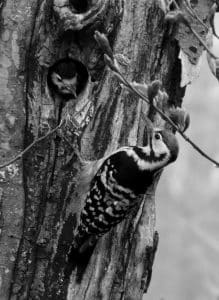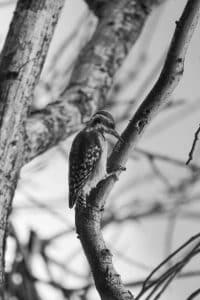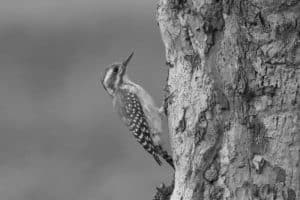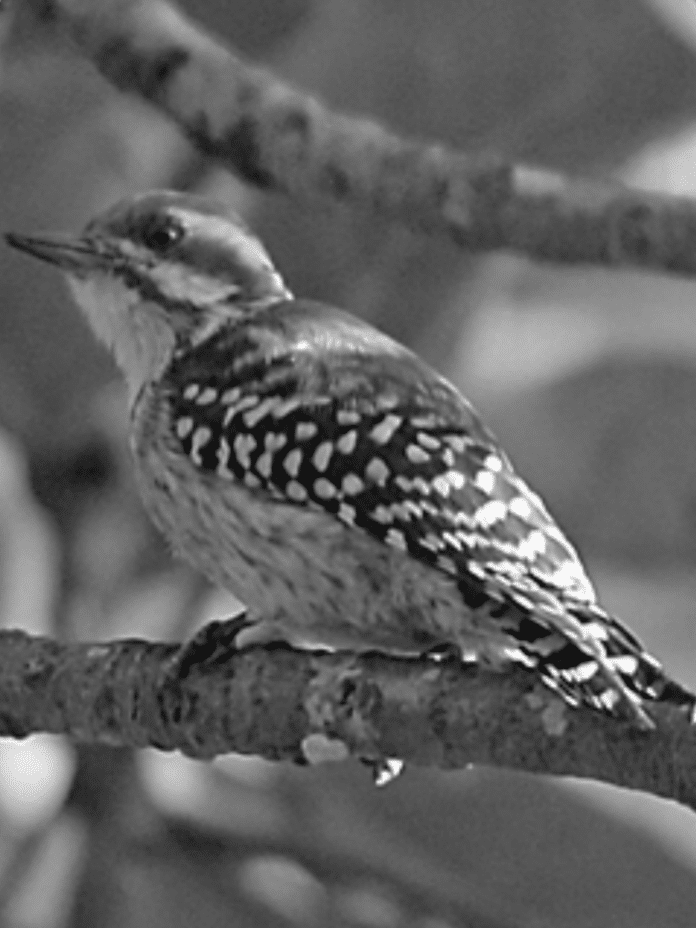Introduction to the Brown-Backed Woodpecker
The brown-backed woodpecker, also known as the African grey woodpecker, is a medium-sized bird that is found in sub-Saharan Africa. It has a distinctive brown back, black-and-white striped wings, and a red crown. The bird’s bill is long and pointed, which it uses to pry insects out of tree bark. The brown-backed woodpecker in Tanzania is a non-migratory species that is found in a variety of habitats, including savannas, woodlands, and forests.
Habitat and Distribution of the Brown-Backed Woodpecker

The brown-backed woodpecker is found throughout sub-Saharan Africa, from Senegal in the west to Ethiopia in the east, including Tanzania. The bird prefers to live in wooded areas, including miombo woodlands, acacia woodlands, and riverine forests. In Tanzania, the brown-backed woodpecker is found in forests such as the Uluguru Mountains, the East and West Usambara Mountains, and the Udzungwa Mountains.
Importance of Tanzanian Forests for the Brown-Backed Woodpecker
Tanzania’s forests are an important habitat for the brown-backed woodpecker, which relies on trees for food and shelter. The bird feeds on insects that live under the bark of trees, including beetles, ants, and termites. The bird also uses trees for nesting, excavating holes in dead or decaying wood to lay its eggs.
The brown-backed woodpecker is a keystone species in Tanzanian forests, playing an important role in maintaining the balance of the ecosystem. The bird helps to control insect populations, which can cause damage to trees and other vegetation.
Behavior and Characteristics of the Brown-Backed Woodpecker
The brown-backed woodpecker is a solitary bird that is generally seen alone or in pairs. The bird is diurnal, meaning it is active during the day. It is a skilled climber, using its sharp claws to cling to tree bark as it searches for insects. The bird also has a distinctive drumming behavior, which it uses to communicate with other woodpeckers and to establish its territory.
The brown-backed woodpecker is a vocal bird, with a range of calls and songs. Its calls include a loud, sharp “chik” and a low-pitched “prrr”. The bird’s songs are complex, consisting of a series of notes that vary in pitch and duration.
Threats to the Brown-Backed Woodpecker’s Population in Tanzania
Like many bird species, the brown-backed woodpecker faces a range of threats in Tanzania. Habitat loss and degradation are the primary threats to the bird’s population, with forests being cleared for agriculture, logging, and urbanization. Climate change is also a threat, with rising temperatures and changing rainfall patterns affecting the bird’s habitat.
Other threats include hunting and trapping, with the bird being used for food and medicinal purposes. In some areas, the bird is also considered a pest and is killed to protect crops.
Conservation Efforts to Protect the Brown-Backed Woodpecker

Efforts are underway to protect the brown-backed woodpecker in Tanzania. The government has established a number of protected areas, including national parks, game reserves, and forest reserves, which provide important habitat for the bird. The government has also enacted laws and regulations to protect wildlife, including the brown-backed woodpecker.
Conservation organizations are also working to protect the bird, through initiatives such as habitat restoration, community outreach, and education programs. These efforts aim to raise awareness about the importance of the brown-backed woodpecker and its role in the ecosystem.
Role of Ecotourism in Promoting Awareness and Conservation of the Brown-Backed Woodpecker
Ecotourism has the potential to play an important role in promoting awareness and conservation of the brown-backed woodpecker in Tanzania. By providing opportunities for tourists to see the bird in its natural habitat, ecotourism can raise awareness about the importance of the bird and its habitat. Ecotourism can also provide economic benefits to local communities, which can help to support conservation efforts.
However, ecotourism must be carefully managed to ensure that it does not have a negative impact on the bird’s habitat or behavior. Guidelines and regulations are needed to ensure that tourists do not disturb the bird or its habitat.
Research and Monitoring Initiatives for the Brown-Backed Woodpecker in Tanzania

Research and monitoring are important tools for understanding the brown-backed woodpecker and its habitat in Tanzania. Scientists are conducting studies to learn more about the bird’s behavior, ecology, and population dynamics. Monitoring programs are also in place to track changes in the bird’s habitat and population.
These initiatives provide important information for conservation efforts and can help to identify threats to the bird’s population. They also provide opportunities for citizen scientists and volunteers to contribute to conservation efforts.
How Individuals Can Contribute to the Conservation of the Brown-Backed Woodpecker
Individuals can play an important role in the conservation of the brown-backed woodpecker in Tanzania. By supporting conservation organizations, volunteering for monitoring programs, and practicing sustainable tourism, individuals can help to protect the bird and its habitat. Individuals can also make a difference by supporting policies and regulations that protect wildlife and its habitat.
Conclusion: The Need for Continued Efforts to Protect the Brown-Backed Woodpecker in Tanzanian Forests
The brown-backed woodpecker is an important bird species that plays a crucial role in Tanzanian forests. However, the bird faces a range of threats, including habitat loss, hunting, and climate change. Efforts are underway to protect the bird, through conservation initiatives, research, and monitoring programs.
Individuals can also play a role in protecting the bird and its habitat, through supporting conservation organizations, practicing sustainable tourism, and advocating for policies that protect wildlife and its habitat. Continued efforts are needed to ensure the long-term survival of the brown-backed woodpecker in Tanzanian forests.

































